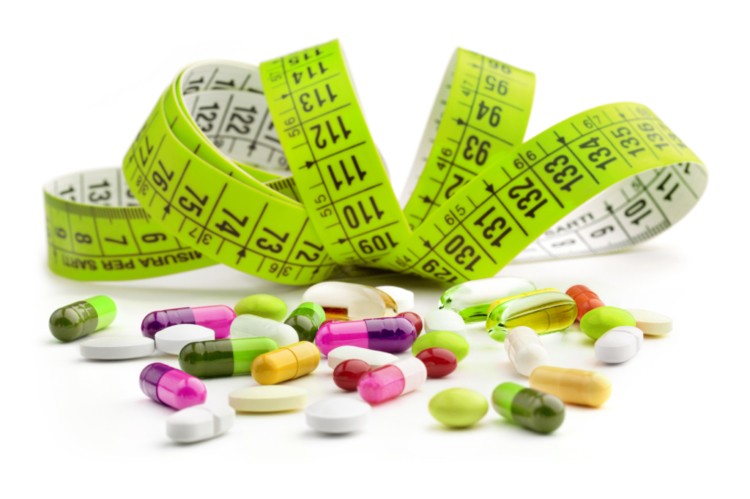HEALTH & WELLNESS
Rotator-Cuff Tear: Surgery Or Physical Therapy?
After experiencing significant discomfort and disfunction, you may have gone through a physical examination, x-rays and an MRI for your troubled shoulder. The result may have been a diagnosis of a rotator-cuff tear. What started as arm and shoulder pain ends with a doctor’s suggestion of an immediate surgery
Published
3 years agoon
By
fitinstyle
After experiencing significant discomfort and disfunction, you may have gone through a physical examination, x-rays and an MRI for your troubled shoulder. The result may have been a diagnosis of a rotator-cuff tear. What started as arm and shoulder pain ends with a doctor’s suggestion of an immediate surgery. But, effective rotator-cuff tear physical therapy may just save you from having to go through surgery. There are many options available including out-patient clinics, or through therapist-assisted home care.
Common
The tear of a rotator-cuff tendon on the shoulder is the most common tendon injury in the human body. It may be the result of chronic impingement and tendon abrasion between the shoulder cap and the shoulder ball- joint. This wear is similar to kneeling until the knee-part of your jeans fray and your knees finally tear through. Tears of this kind may occur with little or no identifiable trauma. In the case of patients over 40-years old, rotator-cuff tears may occur despite normal tendon strength. However, in younger patients’, rotator-cuff tears generally occur as a result of acute tendon overload from strenuous throwing sports. A tear may also result from incorrect weightlifting practices.
ADLs
Correcting a rotator-cuff tear requires realistic expectations. These are important when planning to return to normal Activities of Daily Living (ADLs) including work or sports participation. Jobs often need to be modified for many months during rehabilitation. This is especially important when tears are large. They may be serious enough to prevent a return to activities that may re-tear the cuff.
Treatment
Four separate muscles make up the rotator cuff. The muscles work together to rotate the shoulder, help stabilize the shoulder, and act to depress or hold the shoulder down. With these numerous rotator functions, it is best to get the least risky and damaging treatment options. Rotator-cuff tear physical therapy emphasizes strengthening the intact rotator cuff tendons and deltoid and restoring the functional use of the shoulder. Rotator-cuff tear physical therapy attempts to reduce the painful symptoms in part or totally. Anti-inflammatory medications are often used together with the rotator-cuff tear physical therapy to help to ease the symptoms. But, if these are not effective, diagnostic tests and surgery may be the next logical step.
Surgery
If you have unsuccessfully tried physical therapy and have been recommended for surgery, you should seriously consider it. But before surgery, understand that the most frequent complications of rotator-cuff tear surgery are the incomplete resolution of pain and inadequate restoration of full active motion and strength. Less than 0.5% of patients see infections. Neurological or anesthetic complications are exceedingly rare. Overall, resolution of pain and improvement in functional capabilities occurs in over 85% of patients.
Aftercare
Nevertheless, you would still need post-arthroscopy surgical aftercare. Rotator-cuff tear physical therapy is of the utmost importance for the first 2-months after surgery. Regain shoulder motion initially through passive exercises only. This helps minimize pain and stiffness while protecting the repair. Slowly but surely, active motion and strengthening will be regained, through physical therapy based aftercare and rehabilitation.
You may like
HEALTH & WELLNESS
5 Skincare Regimens Perfect for Spring and Summer
Published
3 months agoon
February 21, 2024By
fitinstyle
Spring is in the air! The trees are changing colours, flowers are blooming, and you will notice that your skin feels different too. The sun is getting harsher, and heat and humidity will make their way towards hampering the skin… Well, if you don’t care. If you fail to switch from your heavy winter skincare routine to a light spring one, you could soon be facing the issues of acne, breakouts and dull skin.
This is the perfect time to amp up your skincare and go in for dermatological treatments like chemical peels and laser skin resurfacing. You can also help your skin be spring and summer-ready by using the right skincare ingredients. An intelligent combination of active ingredients can do wonders for the skin and even keep the signs of ageing away. To make the most of the spring weather learn to make the most of your skincare routine.

Best skincare combinations that will work for your skin
The important thing to remember is to pair your skincare ingredients correctly together. Very few are power couples for the skin that might work and benefits your skin. The first trick, of course, is to not use all the products together. To maximise the benefits of the skincare ingredients, here are some important parings you should not miss:
1. Vitamin C with SPF
Vitamin C is an essential ingredient for skin care. It helps protect the skin from sun damage, fights the antioxidants, repairs the skin barrier, promotes collagen production, and acts as an anti-ageing ingredient. When combined with sunscreen, the two work to protect your skin from environmental damage and block the UV rays that filter through the sunscreen.
Also Read: Vitamin C for skin: 7 benefits you must know about
2. Niacinamide with salicylic acid
Niacinamide is an important ingredient for fortifying the skin barrier and treating hyperpigmentation. Salicylic acid is what your skin needs to keep the breakouts away. When they are used together, your skin will benefit from reduced pore size, prevent acne breakouts, improve skin strength and work against the signs of ageing. Together they also improve collagen and elastin fibres giving the skin a youthful glow from the inside.

3. Retinols with peptides
Move the retinol to your nighttime routine during this time of the year. Vitamin A derivatives are the gold standard for home skin care because they treat everything from acne to ageing to fine lines. Peptides help skin cells rejuvenate and repair. Together they correct your complexion, make the skin tighter and give a smoother and plumper look to the skin.
4. Vitamin C and vitamin E
Vitamin C is essential for skin rejuvenation and protection, and vitamin E helps keep the skin supple. You can use them together to protect the skin from oxidative stress and maintain the suppleness of the skin, leaving you to enjoy the weather in its full glory.
5. Hyaluronic acid with exfoliating acids
Spring is a good time for skin repair, and the AHAs and BHAs do a great job of removing the top layer of the skin, making the new skin sensitive to dryness, and hyaluronic acid is a humectant that restores dryness. Hyaluronic acid recharges skin hydration and has long-lasting benefits for the skin.

Things to remember
When using new skin combinations, make sure you take your skin type into account. Always do a patch test first and start when using these combinations 1-2 times a week along with your regular skincare routine and slowly increase the frequency as needed by the skin. Do not over-exfoliate or scrub the skin, focus on good skin care every day for great results instead.

The sports supplements industry is one of the largest industries in the world of sports, especially with respect to revenue. Athletes are often attracted to these supplements by the effective marketing approaches used by marketers to sell these products. In sports, every athlete seeks to stage the best performances to achieve different milestones through their sporting life. The availability of supplements that can enhance the performance of these athletes makes them seductively attractive for these individuals. No one would miss an opportunity to improve their performance, irrespective of the risks that exist. However, there is a need to ensure that these supplements are regulated. The lack of regulations in the sports supplement industry could lead to increased risks for the athletes. Perhaps we need to have a more standard approach to the management of sports supplements.
By Gabriel I. Escalera
First, it’s essential to first have a better understanding of what sports supplements are in the sporting industry. Sports supplements are additional nutrients that individuals can add to their normal diets to improve their physical abilities to perform in physical activities. Active athletes often include supplements in their diets to achieve sufficient nutrition for optimal performance in sports. In addition, athletes also use supplements to compensate for nutritional deficiencies. Most importantly, there is a belief among athletes that supplements significantly improve their abilities, helping them achieve higher performance.
Supplements play an important role in the diets of athletes. As the name suggests, these substances should be used in addition to the normal diet, as opposed to being replacements. There are supplements that have been developed based on scientific evidence. This means that there are supplements in the market that can be beneficial to the athletes who consume them. There are several benefits that athletes can draw from using these supplements. One of the most significant benefits is that they can legally improve the performance of athletes. Other than that, supplements can also be used to attain the required weight for a specific sport’s weight classes. Similarly, they can be effective in losing weight for a specific sport. Supplements can also be used by athletes to build muscles and improve the circulation of oxygen within the body. Moreover, supplements also provide athletes with an option that helps them avoid the temptations of using other performance-enhancing drugs that are banned in most competitive sporting activities. As such, supplements are critical for athletes, especially with respect to the possibility of enhancing performances.
There is a significant difference between performance-enhancing drugs and dietary supplements. There is a complete ban on performance enhancing drugs in the sporting world. However, dietary supplements are allowed within the sporting world. In the United States, the Food and Drug Administration (FDA) does not place strict regulations on sports supplements. So, the manufacturers of these substances are not required to submit samples of their products to the FDA. The only requirement for sport supplement manufacturers is to make a claim of the health benefits of the supplement, based on scientific evidence. However, the FDA does not go beyond that to scientifically verify these claims. Because of this there may be inadequate regulation of sports supplements, and this places the athlete at the risk of consuming substances that may be harmful to them.
The use of supplements has continued to be a controversial topic among the stakeholders in the supplement industry. These controversies tend to keep the conversation going and ensure that we can develop policies and laws that regulate the production and use of sports supplements. There are concerns about the processes involved in the manufacture of some sports supplements. The manufacturing process plays a significant role in determining the final product. The manufacturing process involves the use of different ingredients and processes that are not entirely known or understood.
Another important area of concern over sports supplements is that of the quality of these supplements. The quality of the supplement is critical however, the FDA does not require any quality standards on supplements. The FDA only requires that the manufacturers make a claim about the health benefits of these supplements. The FDA does not require the manufacturer to provide clinical or scientific trial results that verify the claims. This means that the manufacturers have considerable leeway to provide inaccurate information about the supplements to get approval from the FDA. It is also possible that the manufacturers could create the same substance, give it a different name, and different claims to ensure that they are seen as different supplements.
Based on these observations, there appears to be a need to develop programs, policies, and laws that effectively regulate the production and sale of sports supplements. There is a need for the stakeholders, especially the FDA, to change the approach to the management of the supplements in the market. Regulations should be developed to streamline the manufacturing process. Just like in the manufacture of medicines, there seems to be a need to regulate the manufacture of sports supplements. These supplements, when ingested, have the capacity to alter the body’s function. Their effects are similar to medicines. The regulation of the manufacturing process would ensure that there is a standard quality for every type of supplement. It could ensure that the most appropriate ingredients and processes are used in their manufacture.
Quality control measures should also be implemented to ensure that the supplements are not harmful. The quality of the supplements is dependent on scientific validation of their effectiveness in achieving the objectives for which they are created. As such, the FDA should implement programs that would compel the manufacturers to provide scientific verification for the health claims made. This would mean that quality is central to the development and production of the sports supplements. As such, it could provide a regulatory framework established to eliminate the safety risks associated with sports supplements. This way, sports supplements will be able to achieve their fundamental objectives without creating any controversy.
References
Kapoor, A., & Sharfstein, J. M. (2016). Breaking the gridlock: Regulation of dietary supplements in the United States. Drug testing and analysis, 8(3-4), 424-430. Maughan, R. J., Burke, L. M., Dvorak, J., Larson-Meyer, D. E., Peeling, P., Phillips, S. M., … & Meeusen, R. (2018). IOC consensus statement: dietary supplements and the high-performance athlete. International journal of sport nutrition and exercise metabolism, 28(2), 104-125.

When it comes to achieving a desirable body, it is common for people to have problem areas such as love handles, flabby arms, sagging skin, or hips. The market is flooded with products that claim to eliminate fat or tone specific body parts, from creams and applications to gadgets and machines. However, the reality is that you cannot spot reduce, and the attempt to do so is not only futile but also potentially harmful.
There are several reasons why spot reduction is a myth. Firstly, a healthy diet is crucial in eliminating body fat, and consuming high-calorie and high-cholesterol foods can cause the accumulation of fat in problem areas. No matter how many gadgets you use, if you continue to indulge in unhealthy foods, you will not see results.
Secondly, spot reduction is a simplistic approach that overlooks the complexity of the body. Many products claim to require nothing but attaching or applying them to problem areas, neglecting other body parts and requirements. To achieve a healthy body, you need to understand the physiology of your body and what it takes to achieve your goals. For example, if you want six-pack abs, you need to focus not only on abdominal exercises but also on reducing body fat and increasing body mass through a healthy diet and cardio exercises.
Thirdly, there are no shortcuts to achieving a healthy body. Miracle diets, pills, and potions may seem like a quick fix, but they will ultimately lead to a dead end. To achieve a healthy body, you need to put in the work and earn it.
Finally, committing to the health of your body is a lifelong dedication. Even if you achieve a desirable body now, it will not remain so forever if you abuse your diet and lifestyle. Therefore, it is essential to develop a holistic approach to your health and fitness, incorporating not only exercise and diet but also a positive outlook on life.
In conclusion, the key to achieving a desirable body is to do it the proper way. There are no shortcuts or quick fixes, and spot reduction is a myth. Instead, focus on developing a healthy diet and exercise program that addresses the whole body, and commit to a lifelong dedication to your health and well-being. By taking matters into your own hands, you can enjoy the benefits of a healthy body and a positive outlook on life.
Recent Posts
- The Ultimate Guide to Berberine: Unlocking Its Health Benefits and Healing Properties
- The Ultimate Guide to Berberine: Unleashing its Health Benefits for Blood Sugar Control, Weight Management, and More
- The Ultimate Guide to Berberine: How This Natural Compound Can Revolutionize Your Health
- The Ultimate Guide to Berberine: Unlocking Its Powerful Health Benefits for a Healthier You
- Exploring the Health Benefits of Berberine: A Natural Remedy for Diabetes, Cholesterol, and More
Advertisement
Sponsored Ads
TRENDING
-

 HEALTH & WELLNESS5 years ago
HEALTH & WELLNESS5 years agoAcidophilus: A Probiotic Bacterium
-

 herbs3 months ago
herbs3 months agoThe Ultimate Guide to Ashwagandha Extract: Stress Relief and Optimal Health Unveiled
-

 HEALTH & WELLNESS4 years ago
HEALTH & WELLNESS4 years agoHerbs and Essential Oils to Fight Coronavirus
-

 TRAINING & FITNESS5 years ago
TRAINING & FITNESS5 years ago6 Ways to Decrease your Shoulder Pain!
-

 HEALTH & WELLNESS5 years ago
HEALTH & WELLNESS5 years agoWhy Muscles Get Sore
-

 DIET & NUTRITION5 years ago
DIET & NUTRITION5 years agoLow Carb Diet: Carbohydrates Influence on Testosterone
-

 Fitness5 years ago
Fitness5 years ago“No Pain, No Gain” True or Just a Fitness Myth
-

 HEALTH & WELLNESS5 years ago
HEALTH & WELLNESS5 years agoThe Best Shoulder Workout in Only Six Moves



